Telling time is an important skill in any language. In Greek, it’s both similar to and different from English. Knowing how to tell time is key to daily conversations if you’re traveling in Greece, learning the language, or speaking with Greek people. This guide will break down the basic words, phrases, and structures used to talk about time in Greek. You’ll learn how to ask for time and how to give it.
Basic Vocabulary for Telling Time in Greek
Before diving into the specifics of how to express time, it’s important to familiarize yourself with some essential vocabulary:
-
Time – η ώρα (i óra)
-
Hour – η ώρα (i óra)
-
Minute – το λεπτό (to leptó)
-
Second – το δευτερόλεπτο (to defterólepto)
-
Quarter – το τέταρτο (to tétarto)
-
Half – το μισό (to misó)
-
AM – πριν το μεσημέρι (prin to mesiméri) – translates to “before noon,” though in everyday speech, the distinction between AM and PM is often understood based on context.
-
PM – μετά το μεσημέρι (metá to mesiméri) – translates to “afternoon,” used similarly to indicate times in the afternoon and evening.
How to Ask for the Time in Greek?
When you’re in Greece and need to ask someone for the time, the phrase you’ll need is simple and easy to remember:
-
Τι ώρα είναι; (Ti óra eínai?): “What time is it?”
This phrase will be understood by all Greek speakers, and it serves as a direct and polite way to inquire about the time.
Stating the Time in Greek
Now that you know how to ask for the time, let’s look at how to express it. Telling time in Greek is quite similar to the structure in English, but there are a few differences in phrasing that are important to note.
On the Hour
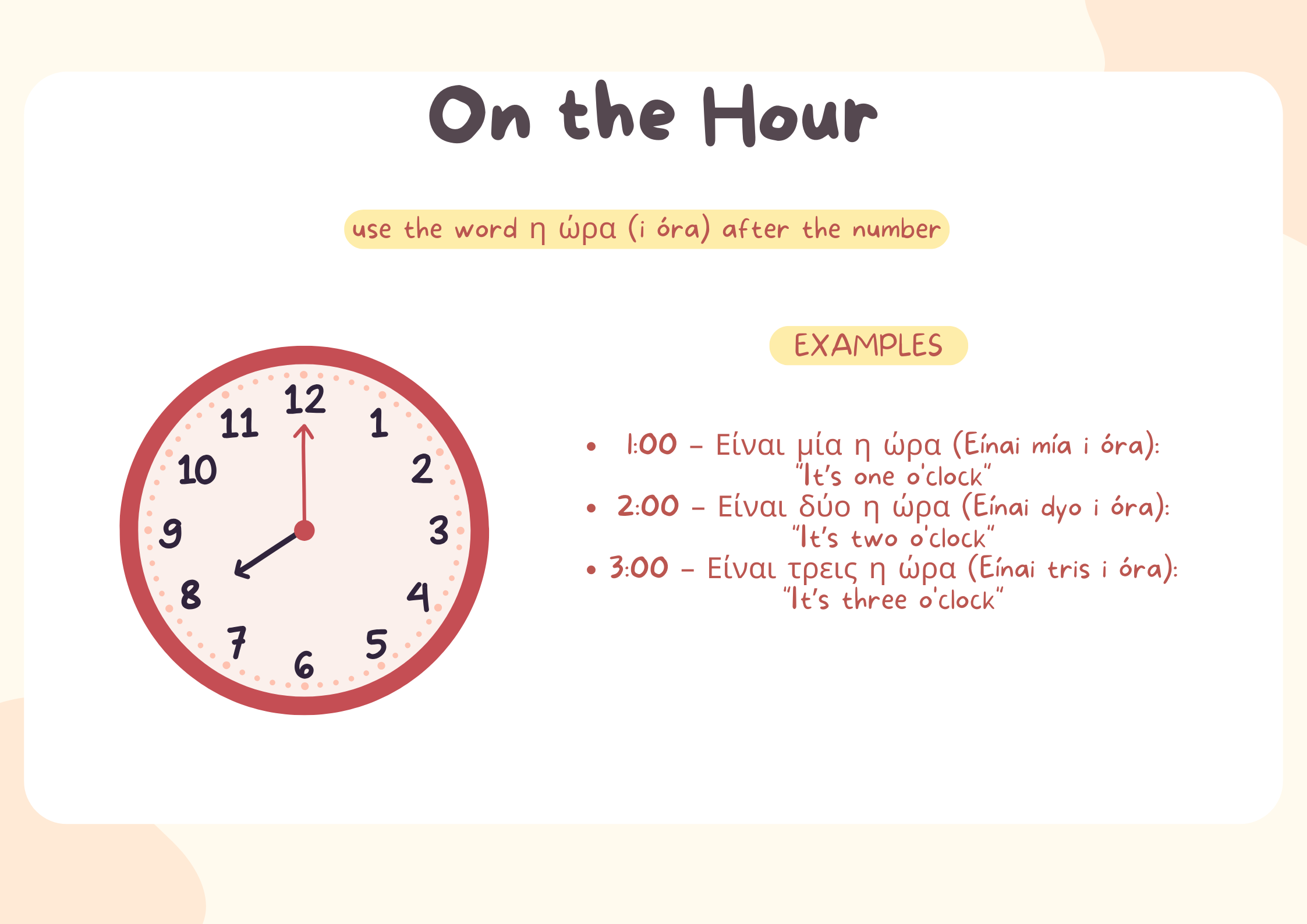
When stating the time on the hour, you use the word η ώρα (i óra) after the number that represents the hour. Here are some examples:
-
1:00 – Είναι μία η ώρα (Eínai mía i óra): “It’s one o’clock”
-
2:00 – Είναι δύο η ώρα (Eínai dýo i óra): “It’s two o’clock”
-
3:00 – Είναι τρεις η ώρα (Eínai tris i óra): “It’s three o’clock”
This structure continues for the remaining hours of the day, and note that μία (mía) is used for “one” instead of ένα (éna), which is normally used for the number one.
Also Read: How To Say “Dog” In Other Languages: A Simple Guide
Half Past the Hour
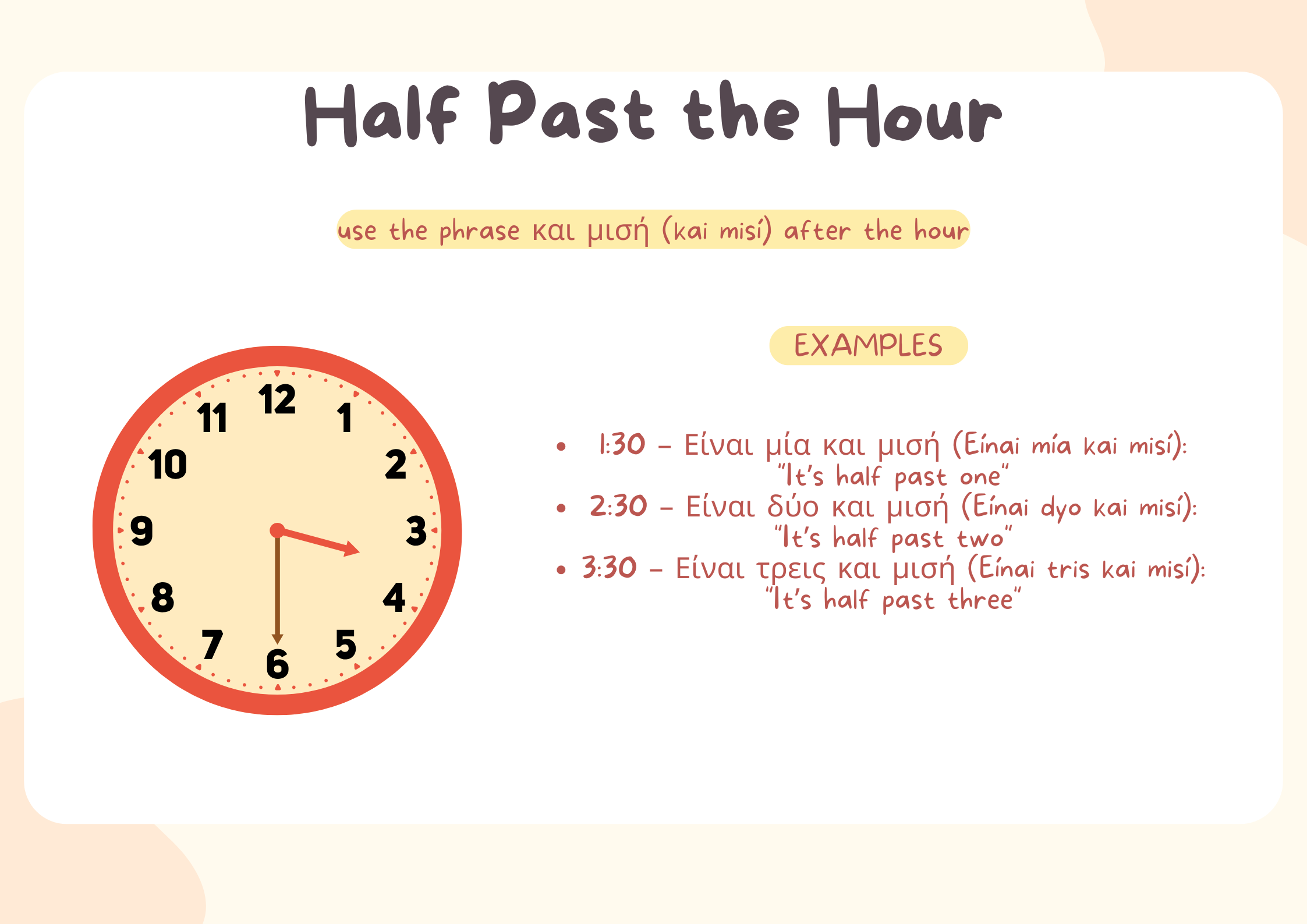
To express that it is half past the hour, use the phrase και μισή (kai misí) after the hour.
-
1:30 – Είναι μία και μισή (Eínai mía kai misí): “It’s half past one”
-
2:30 – Είναι δύο και μισή (Eínai dýo kai misí): “It’s half past two”
-
3:30 – Είναι τρεις και μισή (Eínai tris kai misí): “It’s half past three”
This pattern remains the same for each hour of the day.
Quarter Past the Hour
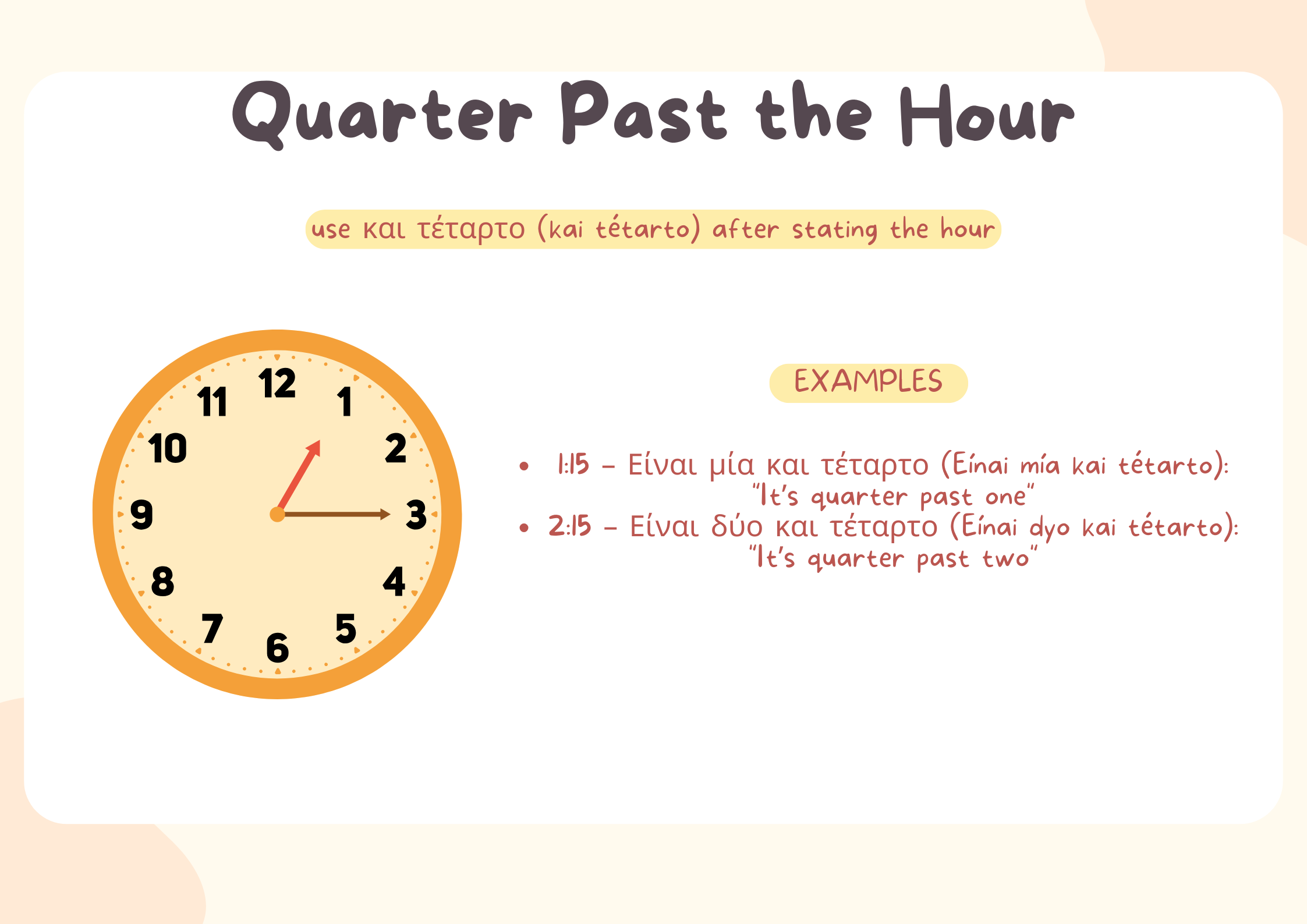
To express a quarter past the hour, you use και τέταρτο (kai tétarto) after stating the hour.
-
1:15 – Είναι μία και τέταρτο (Eínai mía kai tétarto): “It’s quarter past one”
-
2:15 – Είναι δύο και τέταρτο (Eínai dýo kai tétarto): “It’s quarter past two”
Quarter to the Hour
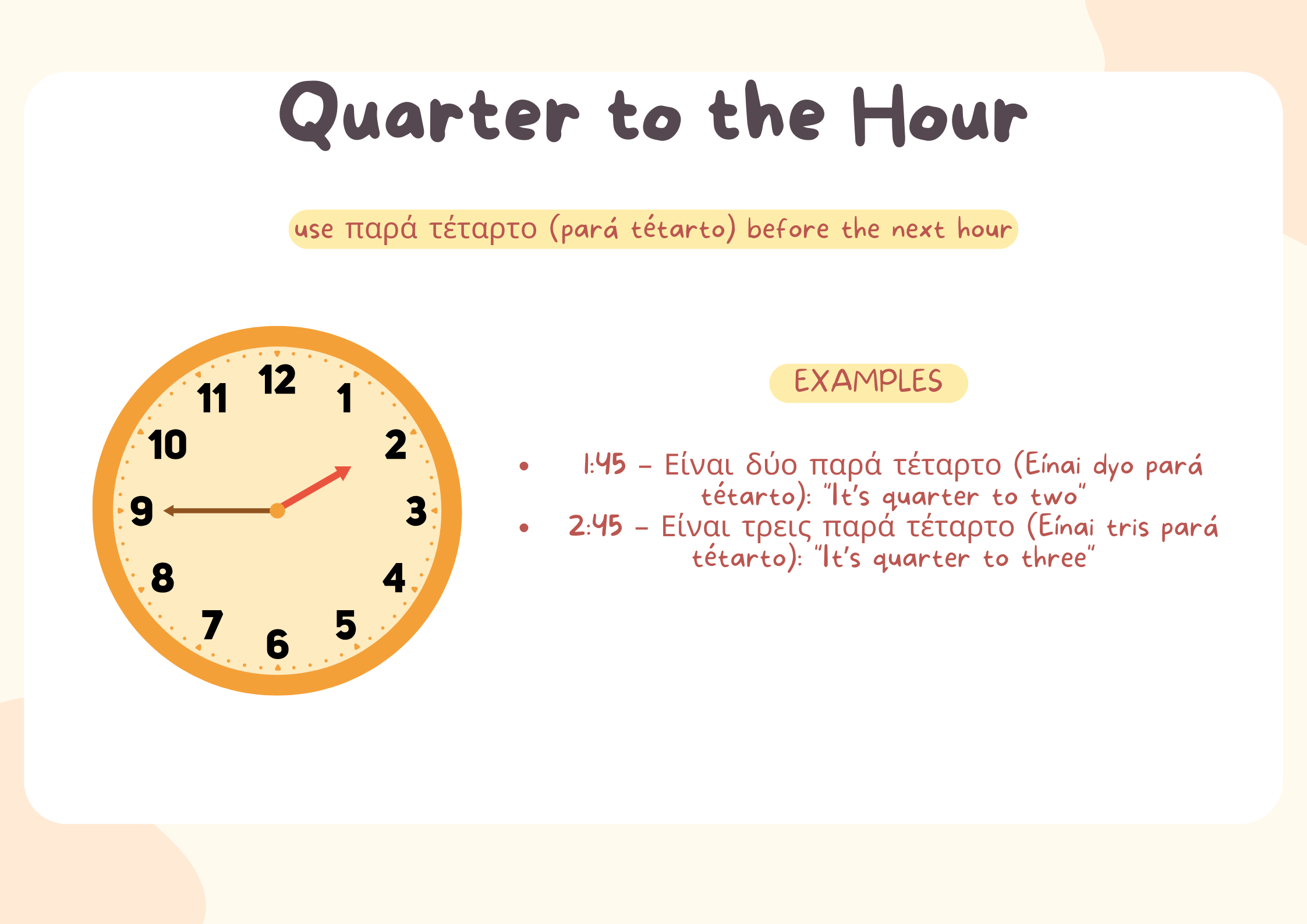
When you want to express that it’s a quarter to the next hour, use παρά τέταρτο (pará tétarto) before the next hour.
-
1:45 – Είναι δύο παρά τέταρτο (Eínai dýo pará tétarto): “It’s quarter to two”
-
2:45 – Είναι τρεις παρά τέταρτο (Eínai tris pará tétarto): “It’s quarter to three”
In this case, the phrase “quarter to” involves stating the hour that is approaching next, similar to English.
Minutes Past the Hour
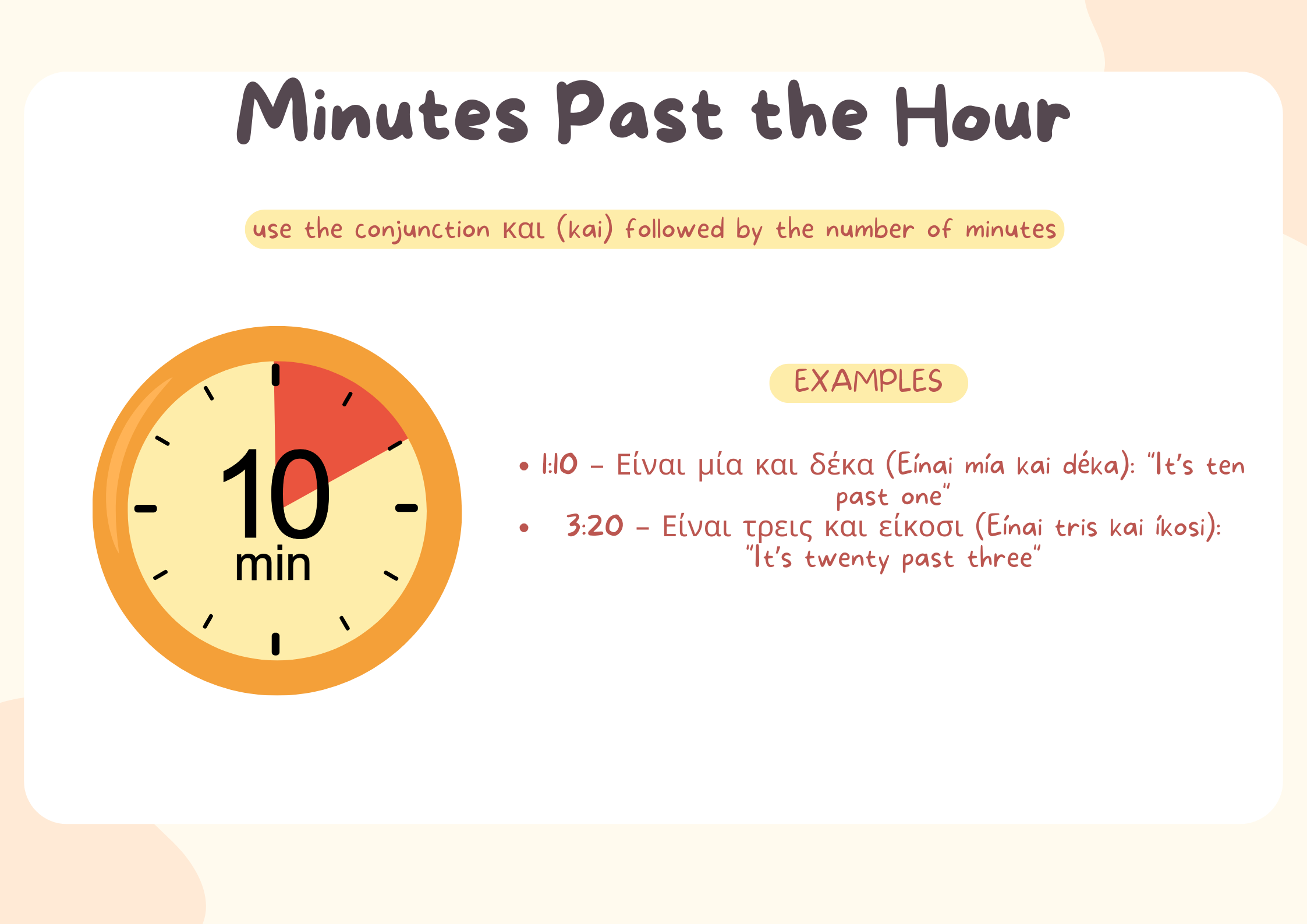
For times that aren’t on the hour, half past, or quarter past/to, you use the conjunction και (kai) followed by the number of minutes.
-
1:10 – Είναι μία και δέκα (Eínai mía kai déka): “It’s ten past one”
-
3:20 – Είναι τρεις και είκοσι (Eínai tris kai íkosi): “It’s twenty past three”
This is the standard way to express any minutes past the hour in Greek.
Minutes to the Hour
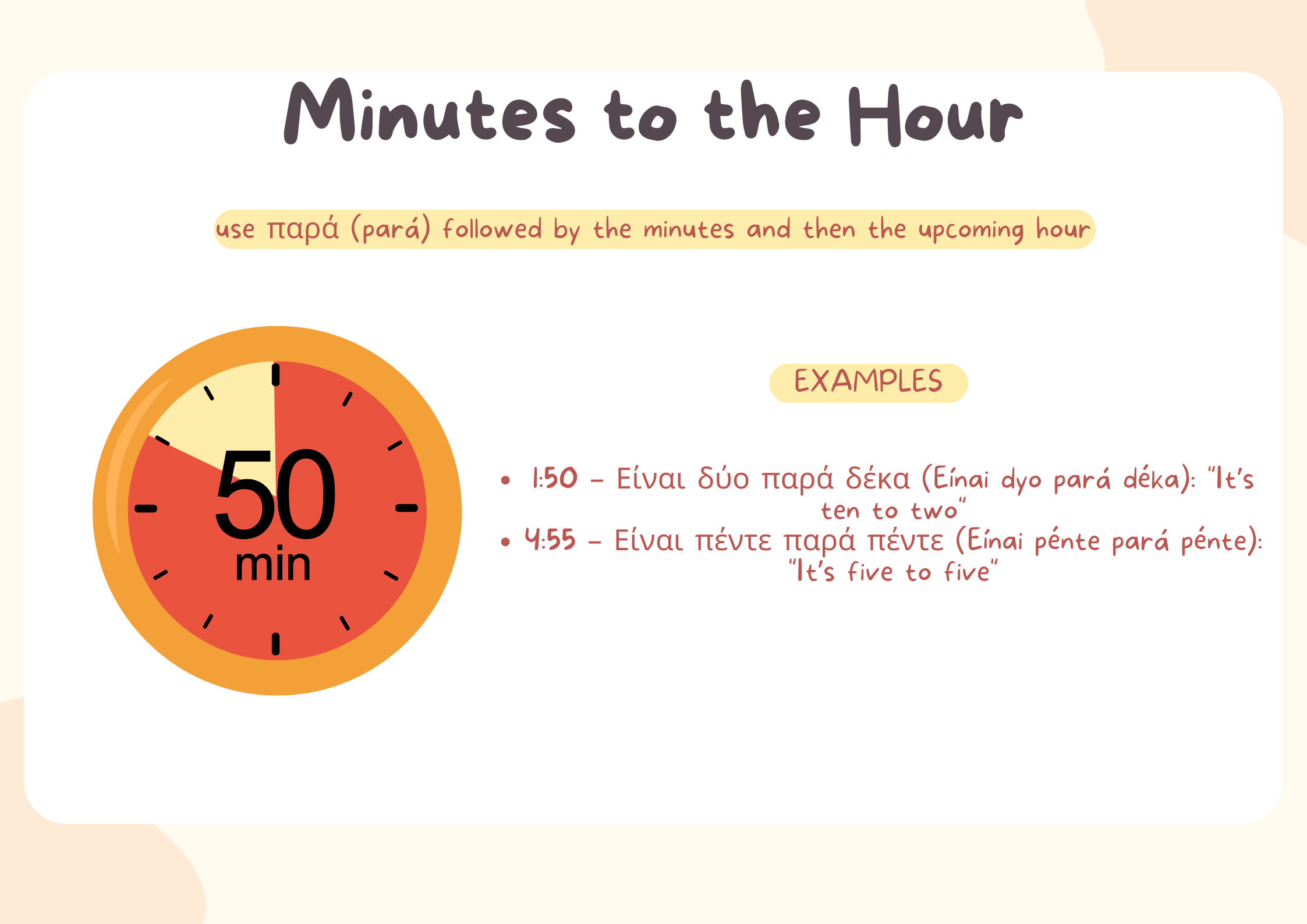
To indicate that it’s a certain number of minutes to the next hour, use παρά (pará) followed by the number of minutes and then the upcoming hour.
-
1:50 – Είναι δύο παρά δέκα (Eínai dýo pará déka): “It’s ten to two”
-
4:55 – Είναι πέντε παρά πέντε (Eínai pénte pará pénte): “It’s five to five”
The structure is similar to saying “minutes to” in English.
Also Read: Greek Numbers: How To Count From 1 – 1000 (Easy Guide)
The 24-Hour Clock in Greek
In more formal settings, such as timetables, announcements, or official schedules, Greece uses the 24-hour clock (often referred to as military time). In this system, there is no need to differentiate between AM and PM, as the hour numbers increase past 12:00 to reflect afternoon and evening times. Below are examples of how to express these times in Greek:
-
14:00 (2:00 PM) – Είναι δεκατέσσερις η ώρα (Eínai dekatésseris i óra): “It’s fourteen o’clock”
-
17:30 (5:30 PM) – Είναι δεκαεπτά και μισή (Eínai dekaeptá kai misí): “It’s seventeen-thirty”
This system is straightforward once you get used to it, and it avoids the ambiguity that can sometimes arise with AM and PM.
Conclusion
Telling time in Greek is a useful skill that’s easy to pick up. It helps in everyday situations like asking for time, catching a train, or making plans with friends. The structure is much like English, but there are key phrases to know. For example, και τέταρτο (kai tétarto) means “quarter past,” and παρά τέταρτο (pará tétarto) means “quarter to.” Whether you use the 12-hour clock in conversation or the 24-hour clock in formal settings, learning to tell time in Greek will improve your communication and connection with others. Keep visiting the Translation Blog for more translation articles like this.

